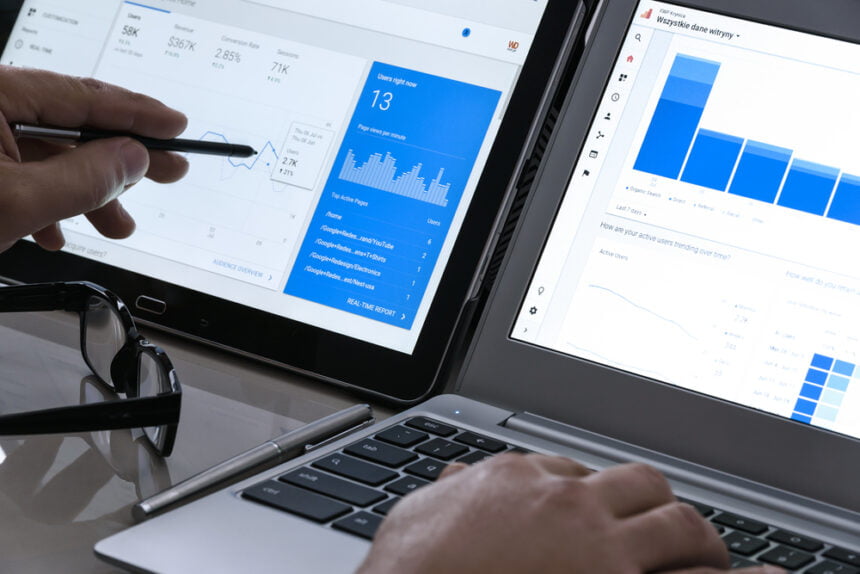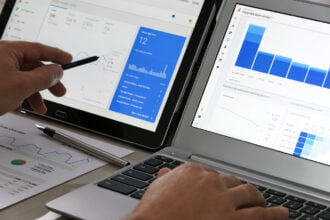Businesses have been using websites to reach customers for nearly 30 years. The first websites predated modern analytics technology. Google Analytics wasn’t launched until 2005. However, advances in analytics over the past decade have made it easier for companies to create quality websites. This has in turn increased the demands of customers using modern websites.
If you are trying to create a great website, then you have to leverage analytics tools to improve the quality of your site by assessing the right metrics. Keep reading to learn more about using analytics to optimize your website.
Analytics is Crucial for Optimizing Websites
Your website is only as brilliant as the amount of effort you put into it. A well-built site will automatically respond to your visitors by tailoring content for their needs. More thoughtful websites make users happier, generate more leads and conversions, and increase the odds that they will return.
A more imaginative visitor experience takes time to accomplish. However, making investments will give you the best return based on your goals and resources is best.
Web optimization positively impacts your revenue, whether you profit from advertising or sales via content distribution. You can use sophisticated digital and behavior analytics technology.
Analytics technology can measure the effectiveness of your website’s elements, reveal weak areas, and show you what needs improvement. You can track every performance component, including network bandwidth usage, user interaction patterns, and system response times.
Here are some ways that you can use analytics to improve the quality of your website.
Test different value propositions
One of the best ways to use analytics in website optimization is to test different value propositions. This will help you choose the best for your website.
A value proposition is a message that your site sends to visitors. It’s the promise of what you’ll provide, including customer service and products or services.
Your site should include offers highlighting your product or service and highlight what makes it distinguishable from other options available. It’s also vital that the value proposition is tailored to your audience and does not come across as generic or insincere.
You want to use Google Analytics or another website analytics tool to split-test different value propositions. You can create a Conversion Goal in Google Analytics and test the effectiveness of each value proposition to see which ones work the best.
Optimize your visual creatives
You will also want to use analytics technology to test different visual creatives. You can evaluate many different images, banners and buttons by setting up conversion goals in Google Analytics or creating heat maps with analytics tools like Crazy Egg.
Visuals are a super important part of any website. It’s a great way to bring your website to life and help you stand out in the crowd. Consider investing in photography and video production.
Visual content can build awareness, increase engagement and generate sales. It’s also great to share personal stories and experiences with your target audience. Remember that maintaining clear and consistent visual elements, including color, graphics, and contrast, is essential.
Therefore, you should use analytics tools to carefully optimize all of your visual creatives.
Focus on mobile responsiveness
Mobile devices account for a significant portion of all web traffic. To meet the growing needs of your customers, make sure your website is mobile-friendly.
Your site should also be compatible with multiple mobile devices, including smartphones, tablets, and small handhelds. Remember to include instructions and information about any mobile device-specific features.
Analytics technology helps you see how customers respond to different elements, so you can tweak them accordingly. You can also use AI applications that make websites more responsive.
Prioritize accessibility
Analytics technology can also help make your website more accessible to people with disabilities. Tom Widerøe has an entire article on Medium on this topic titled Can we use web analytics to improve accessibility?
Web standards allow people with disabilities to access websites, including those with impaired vision and hearing loss. For example, you can include alternate content such as text descriptions or transcripts for visual media, braille transcripts for audio content, and text-to-speech technologies for video and audio content.
Analytics technology helps identify the areas where people with disabilities will struggle to access your content. However, you will need to know what changes to make.
Alternatively, you can also use screen readers to provide access for blind users to multimedia content. If you aren’t already implementing these principles, it may be an excellent time to review your site’s accessibility and make any necessary updates.
Identify key integrations
You can also use analytics technology to identify outdated plugins or other issues. Then you can take measures to update your site.
One of the quickest ways to improve your site’s functionality is by integrating it with other web and mobile applications. Integrate your website with email marketing solutions, digital dashboards, and lead management services.
Site owners can use plugins that add to their existing customer platforms, such as shopping carts, and eCommerce platforms, such as Shopify. You can also integrate your website with social media platforms like YouTube, Facebook, and Twitter.
Test different calls to action
A clear CTA is vital for creating a memorable experience for your website visitors. Chances are, if your site lacks one, you may be missing the opportunity to keep your website visitors engaged with the content.
Compel users to take action and increase the chances of making a purchase, subscribing to your email list, or downloading your content.
Again, you will want to use analytics tools to test different calls to action. Setting up conversion goals in Google Analytics will help a lot.
Update regularly
Your website must reflect the same quality, functionality, and aesthetic style you display in your marketing materials. If not, then you’re quickly losing traffic to competitors.
You may find it easier to implement updates after the initial launch, so there is less risk of messing up or forgetting about them later. You can also use the timed release of new features as a way to ensure a consistent level of improvement throughout the life cycle of your website and content.
Analytics Technology is Essential for Website Optimization
With a more imaginative visitor experience, you’re more likely to generate better results. With transparent analytics and progress tracking, you can measure the success of your efforts and closely monitor website performance. Using effective web design, you can quickly build a more substantial online presence while retaining the interest of your online customers.










